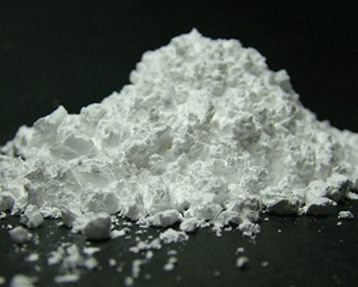Appearance White solid. Melting point 2,425 °C Formula Y2O3 | Molar mass 225.81 g/mol Density 5.01 g/cm³ Space group Ia-3, No. 206 | |
 | ||
Related compounds | ||
Yttrium oxide, also known as yttria, is Y2O3. It is an air-stable, white solid substance. Yttrium oxide is used as a common starting material for both materials science as well as inorganic compounds.
Contents
Gas Lighting
The original use of the mineral yttria and the purpose of its extraction from mineral sources was as part of the process of making gas mantles and other products for turning the flames of artificially-produced gases (initially hydrogen, later coal gas, paraffin, or other products) into human-visible light. This use is almost obsolete - thorium and cerium oxides are larger components of such products these days.
Materials science
It is the most important yttrium compound and is widely used to make Eu:YVO4 and Eu:Y2O3 phosphors that give the red color in color TV picture tubes. Yttrium oxide is also used to make yttrium iron garnets, which are very effective microwave filters.
Y2O3 is used to make the high temperature superconductor YBa2Cu3O7, known as "1-2-3" to indicate the ratio of the metal constituents:
2 Y2O3 + 8 BaO + 12 CuO + O2 → 4 YBa2Cu3O7This synthesis is typically conducted at 800 °C.
The thermal conductivity of yttrium oxide is 27 W/(m·K).
Inorganic synthesis
Yttrium oxide is an important starting point for inorganic compounds. For organometallic chemistry it is converted to YCl3 in a reaction with concentrated hydrochloric acid and ammonium chloride.
Lasers
Y2O3 is a prospective solid-state laser material. In particular, lasers with ytterbium as dopant allow the efficient operation both in continuous operation and in pulsed regimes. At high concentration of excitations (of order of 1%) and poor cooling, the quenching of emission at laser frequency and avalanche broadband emission takes place.
Natural occurrence
Yttriaite-(Y), approved as a new mineral species in 2010, is the natural form of yttria. It is exceedingly rare, occurring as inclusions in native tungsten particles in a placer deposit of the Bol’shaja Pol’ja river, Prepolar Ural, Siberia. As a chemical component of other minerals, the oxide yttria was first isolated in 1789 by Johan Gadolin, from rare-earth minerals in a mine at the Swedish town of Ytterby, near Stockholm.
